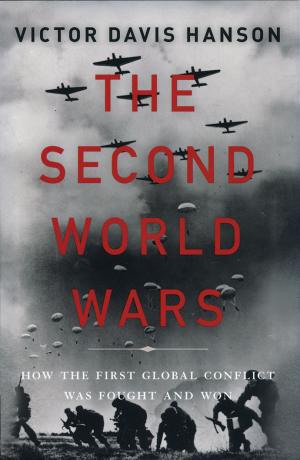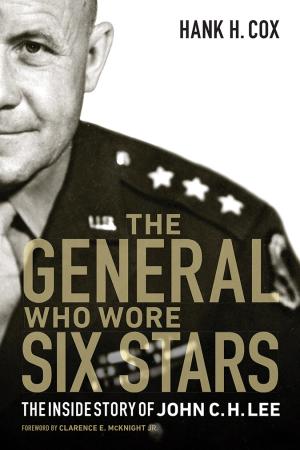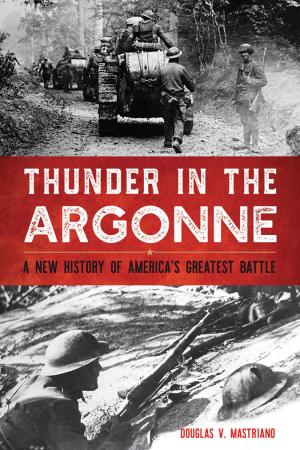Varying Strategies in Diverse Theaters Won War
The Second World Wars: How the First Global Conflict Was Fought and Won. Victor Davis Hanson. Basic Books. 720 pages. $40
By Col. Gregory Fontenot
U.S. Army retired
Often provocative, always ambitious Victor Davis Hanson has produced another sweeping narrative spiked with insights drawn on years of study of classical and military history. While Hanson is an accomplished scholar, The Second World Wars is his first foray, aside from opinion pieces, into 20th-century warfare. It is a grand success. This is a particularly practical book for those not trained as historians. Hanson ably captures the broad scope and immense scale of a truly global war.
In the preface, Hanson explains his interest as a reflection of wonder at the stories the many veterans in his extended family told at “holiday gatherings in the early 1960s.” Hanson recalls “wondering whether they had even fought in the same war.” Of course they fought in the same war, but not the same kind of war. Some relatives fought in the air and some on land in several different theaters. A Japanese machine gun killed a second cousin on Okinawa. The Germans killed another in France. One of those who survived served in Iran as a logistician moving materiel to the Soviet Union. Their experiences and his own analysis suggested the title—The Second World Wars.
Hanson’s narrative runs the gamut of air, sea and land operations in the global context, but his focus or central theme is clear. He argues that the Axis powers were unprepared “politically, economically and militarily—to win the global war they had blundered into during 1941.”
While this is not a new idea, Hanson’s approach is. His analysis springs from the depth and breadth of his study of classical and modern military history. The traditions and peculiarities of historical democracies and totalitarian forms of government inform his thinking about World War II. Yes, he makes references to Thucydides, the historian and general of ancient Greece, but he is equally comfortable with the military history of modern Europe and the U.S. When Hanson draws historical parallels, they are instructive and relevant, as are his allusions to culture.
Rather than taking a chronological approach, Hanson organizes the narrative into six parts reflecting separate themes: ideas, air, water, earth, fire and people. Ideas and people provide bookends to the four elements of the ancient western world. Ideas encompass the context of the war including the grievances that led to it along with opposing alliance systems. The Western Alliance, including its collaboration with the Soviet Union, however ironic, was an old alliance, largely predating World War I. The alliance of Axis Powers was a new one among partners who shared too little to embrace each other fully.
For these reasons, the two alliances had little symmetry. However dysfunctional the alliance between the western powers, the Soviet Union and Chinese leader Chiang Kai-shek, it operated smoothly and effectively compared to the Axis. Alluding to U.S. President Franklin D. Roosevelt and British Prime Minister Winston Churchill, Hanson opines, “Perhaps Thucydides was right that during existential conflicts like World War II democracies run by a single, powerful, though legitimate leader become the most effective war-makers.” Furthermore, Churchill and FDR mobilized their democracies more completely than did the opposition.
Hanson covers thoroughly the air power revolution demonstrated over the skies in Europe and flying from the decks of carriers in the Pacific. He affirms the essential strategic value of America’s dominant two-ocean Navy. He concludes that control of the air over Europe and dominance at sea established the essential conditions for victory, but the poor bloody infantry remained supreme, at least in this war. He suggests the German army’s supposed tactical superiority “may be related to the fact that Americans were more likely tasked with riskier offensive invasions and landings than with exclusively defensive operations.”
The quality of the U.S. Army’s leadership in World War II is often questioned and rightly so. However, Hanson argues that it “produced the greatest numbers of excellent, brigadier, major and lieutenant generals, as well as a mostly underappreciated logistical and support staff.” Finally, he lays bare the simple fact that critics of the “GI” riflemen ignore, “the fact that no other Army had to be raised so quickly from virtual nonexistence” and then deployed literally all over the world. Yet that Army won its wars and did so with “a small absolute number of casualties in comparison to those it inflicted upon Axis ground forces.”
There is more to be found in The Second World Wars and it is well worth the effort. We have much to be proud of in the achievements of our predecessors who served in World War II at sea, in the air, on land and in support of the troops.
Col. Gregory Fontenot, USA Ret., commanded a tank battalion in Operation Desert Storm and an armor brigade in Bosnia. A former director of the School of Advanced Military Studies, he is co-author of On Point: The United States Army in Operation Iraqi Freedom and author of The 1st Division and the US Army Transformed: Road to Victory in Desert Storm 1970–1991.
* * *
Shedding Light on a Vilified Logistician
The General Who Wore Six Stars: The Inside Story of John C.H. Lee. Hank H. Cox. Potomac Books. 280 pages. $32.95
By Maj. Kyle Hatzinger
Hank Cox’s The General Who Wore Six Stars: The Inside Story of John C.H. Lee begins to change the narrative of one of the more vilified officers of World War II: John C.H. Lee, commanding general of the Services of Supply, European Theater of Operations. Put simply, Lee was in charge of all logistics in the European Theater.
Eviscerated almost universally by historians writing about the operational history in the European Theatre, Lee emerges as a more sympathetic character in Cox’s biography, which begins to unravel a complicated man and explain the enormous task Lee undertook in support of the largest land force the U.S. ever fielded.
Cox traces Lee’s life from boyhood to his 1958 death. While not containing a level of primary-source material to be truly groundbreaking, Cox relies heavily on Lee’s unpublished memoir to give the reader a window into Lee’s actions and his reasoning for those activities.
Cox’s commentary throughout the book defends Lee well against the criticisms leveled by Gens. George S. Patton, Omar N. Bradley, Walter Bedell Smith and others. Cox defends Lee against the common faults historians point out: his use of a private train, the logistical nightmare the invasion of North Africa became, Lee’s establishment of Services of Supply Headquarters in Paris, and the European Theater’s supply crisis of 1944.
Cox argues well, pointing out that the problems outlined largely stemmed from a lack of understanding by senior officers regarding the complexity of logistical operations. The reader will emerge from this book thinking critically about the scope of problems facing the Army in Europe and no longer pinning the rose solely on Lee.
One of the most interesting topics Cox explores is Lee’s relationship with Gen. Benjamin O. Davis Sr. The first black general officer in the Army, Davis spent the war advocating for black soldiers to receive fair treatment in the then-segregated Army. Davis found an ally in Lee, who commanded the majority of black soldiers in the European Theater. Lee’s Dec. 26, 1944, order in response to the American replacement shortage fielded some of the first integrated Army units in World War II. Cox notes that 4,562 black soldiers responded to this order, some taking demotions in rank from support jobs for a chance to fight.
In addition to beginning the process of changing the narrative on Lee, Cox’s book offers many lessons to today’s Army. One is its glimpse into the complexity of supplying multiple armies across a theater of war. As the Army looks to brush up on large-scale combat operations, it becomes prudent for officers, regardless of branch, to understand the enormous task that is theater logistics, and that a similar undertaking today, while different in methods and requirements, would be equally complicated.
Professional soldiers and historians will find interactions between senior American officers in the European Theater interesting. Planning operations devoid of logistic considerations is traditionally a knock against the Wehrmacht, but Cox points out the U.S. Army was guilty of the same charge.
The General Who Wore Six Stars increases our historical understanding of one of the key, yet relatively unknown, individuals responsible for victory in Europe and reminds the military professional that logistics cannot be relegated to an afterthought.
Maj. Kyle Hatzinger is an instructor in the Department of History at West Point. He previously served as a rifle platoon leader and tank company commander in Iraq.
* * *
Americans Paid Dearly in Final Push of WWI
Thunder in the Argonne: A New History of America’s Greatest Battle. Douglas V. Mastriano. University Press of Kentucky (An AUSA Title). 456 pages. $34.95
By Geoffrey Wawro
In this, the centennial year of the great battles that decided World War I on the Western Front, Douglas V. Mastriano’s Thunder in the Argonne arrives as a solid, concise analysis of the crucial, decisive and deeply flawed American offensive in the Meuse-Argonne, France.
The American attack in the Meuse-Argonne was the most important of the great Allied offensives of 1918 that stretched from the British sector between Ypres and Amiens, through the French sectors in Picardy and Champagne, to the newly created American Expeditionary Forces (AEF) sector in Lorraine.
The British and French had exhausted their manpower in four years of war. It hadn’t helped that they’d wasted much of this manpower in poorly conceived assaults on hardened German positions, but the result was that by 1918, the British and French armies were gripped by caution. Field Marshal Douglas Haig had hollowed out the British Expeditionary Force with his botched offensives on the Somme and at Passchendaele. The French army, with the highest per capita casualties of any great power, had mutinied in 1917 and would attack with reluctance in 1918, and only when preceded by tanks and annihilating artillery barrages.
The Allies, in other words, could take no advantage of the chief German vulnerability on the Western Front: the extreme narrowing of the German front in France in the space between French-held Verdun and German-held Sedan. Through this space—judged Germany’s “vital pivot”—chugged the great majority of the German army’s supplies, munitions and troops on the key railway from Metz and Thionville northwestward to Lille and Bruges, Belgium.
The Allies had detected this Achilles’ heel at the outset of the war but, owing to the catastrophic losses in the Allied armies, could not muster additional manpower to strike through the Meuse-Argonne to amputate that principal German railway. The fact that the Germans carried their Hindenburg Line fortifications right across the prospective battlefield to the commanding Meuse Heights on the east bank of the Meuse River made the sector even more daunting.
America’s decision to send more than 1 million troops to France in the months after its declaration of war in April 1917 presented the Allies with the manpower they needed to cut the German lifeline at its most stoutly defended point.
Mastriano writes a tight, reasoned, colorful analysis of the American battle. The AEF stumbled repeatedly, and how could it not? It had been puffed up to 20 times its prewar size by a hasty draft and expansion of combat divisions, general staff, field officers and NCOs. Thunder in the Argonne recreates the confusion bordering on madness of the seven-week battle as Gen. John J. Pershing, flailed by Allied criticism of his operations, forced his generals to launch hopeless offensives against German artillery and machine guns. The casualties were predictably monstrous.
Inexorably, the U.S. First Army bashed through the three German defensive lines above Verdun, fought its way to the critical right bank of the Meuse and advanced along both banks to Sedan. This was the war-ending blow, delivered by brave American troops in the last days of the 1,566-day war. Thunder in the Argonne is an excellent account of the bloody, tragic and decisive battle.
Geoffrey Wawro is the director of the University of North Texas Military History Center and the author of six books, including Sons of Freedom: The Forgotten American Soldiers Who Defeated Germany in World War I.
* * *
VA Close Look at Roosevelt’s Final Days
The Last 100 Days: FDR at War and at Peace. David B. Woolner. Basic Books. 368 pages. $29.99
By Col. David D. Haught
U.S. Army retired
Most view the first 100 days of a presidential term with excitement or criticism. These first few days inform the public’s perception of how things are going. They tell us if the chief executive and his administration are setting conditions to realize policies promised during the campaign. They may even portend what will happen over the next 32/3 years.
The 100-day standard to which modern-day presidents are measured traces its roots to the first days of Franklin D. Roosevelt’s presidency from March 4 to June 14, 1933. During his first 100 days, Roosevelt led the passage of 15 pieces of major legislation, all part of his New Deal initiative. This remarkable progress earned FDR widespread popularity. In The Last 100 Days: FDR at War and at Peace, author, columnist and editor David B. Woolner, senior fellow and resident historian of the Roosevelt Institute, professor of history at Marist College, N.Y., and senior fellow of the Center for Civic Engagement at Bard College, N.Y., argues that Roosevelt’s last 100 days were just as important and impactful as the first 100.
In great detail, Woolner covers Roosevelt’s last 100 days beginning on Christmas Eve 1944 in Hyde Park, N.Y., through his death on April 12, 1945, in Warm Springs, Ga. During this short period of time, Roosevelt dealt with the surge of the Wehrmacht in the Battle of the Bulge. He traveled nearly 14,000 miles (mostly by ship) to participate in the Malta Conference with British Prime Minister Winston Churchill, followed by the Yalta Conference with Churchill and Soviet Premier Josef Stalin. He examined how to approach the final stages of the war against Japan, including the implications of the use of the atomic bomb. He explored how the U.S. would transition its economy from one of war to one of peace. He laid the final groundwork for the establishment of the U.N. If that were not enough, returning home following the Yalta Conference, Roosevelt stopped in Egypt to negotiate the creation of a homeland for the Jews in Palestine.
Most readers will gain a newfound appreciation for just how ill Roosevelt was. It is no secret that he was ill; the extent is revealed by Woolner. Remarkably, and to his credit, Roosevelt remained committed to his work and vision that the U.S. would play a leading role in the postwar world.
Based on over 700 citations, Woolner meticulously narrates the challenges, opportunities, successes and failures Roosevelt faced. Sources include memoranda from doctors, declassified records from the Office of Strategic Services, documents from the British and Soviet archives, diaries of people close to Roosevelt and a recently constructed day-to-day calendar of Roosevelt’s activities, including activities he wanted kept secret. This calendar would not have been possible without the painstaking reconstruction performed by researchers at the FDR Presidential Library in Hyde Park (the nation’s first presidential library).
Woolner embarked on his journey to convince the reader that Roosevelt’s work during his last days was just as significant as during his first 100. He did a magnificent job of doing so. The book is a pleasure to read and will appeal to many audiences. Roosevelt’s accomplishments during his first 100 days were significant in raising the U.S. out of the depths of the Great Depression. Many of those initiatives remain with us today.
It is the work Roosevelt did at the end of his presidency that expanded beyond the borders of the U.S. and had a lasting impact on the rest of the world. The fact he did so given his poor health is all the more remarkable. In penning his final speech (never delivered) the day before he died, Roosevelt wrote, “The only limit to our realization of tomorrow will be our doubts of today. Let us move forward with strong and active faith.” Those words are reflective of the optimism and belief in America by its 32nd president.
Col. David D. Haught, USA Ret., is an assistant professor in the Department of Tactics, U.S. Army Command and General Staff College, Fort Belvoir (Va.) Satellite Campus. He served over 29 years in the Army as a field artillery officer with his final assignment as division chief, Joint Requirements and Assessments, Deputy Chief of Staff for Programs, Headquarters, Department of the Army, the Pentagon.





